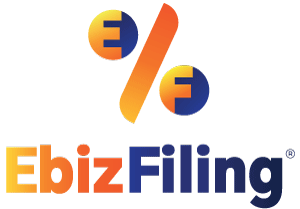
-
December 21, 2021
All you need to know about Advantages and Disadvantages of E-Governance
Introduction
This blog contains information about what is e-governance in India, the e-governance portal in India, and the advantages and disadvantages of e-governance. Governments all around the world are making attempts to incorporate Income Tax into all governmental activities because of the rapid expansion of the internet and digitization. The concept of E-governance is implemented with the purpose of bringing more clarity and transparency to the work done by the government.
The taxpayer will profit from E-government because it will save them time and make the process faster and more flexible. It also assists taxpayers in saving a significant amount of money.
What is e-governance in India?
E-governance has become critical in a fast-growing and demanding economy like India. The use of Information and Communication Technology (ICT) by the government to offer and facilitate government services, communication transactions, information exchange, and integration of numerous standalone systems and services is termed as electronic governance or e-governance.
In simple terms, e-governance refers to the services provided by the Indian government to its residents via an internet portal. This will assist users as well as government officials in maintaining transparency, accountability, and flexibility.
Types of E-Governance Portal in India
www.india.gov.in is the Indian e-governance platform. On this website, you can find detailed information about the National Conference on e-Government as well as reports from previous conferences.
The portal also includes links to the following relevant pages
- Website for e-governance at the United Nations
- India’s National Portal: It was created to give citizens access to government information and services.
- PM India Website: gives information about the Prime Minister’s Office.
- Digital India
Advantages of E-Governance
- While implementing electronic government, the key benefit would be to replace and optimize the paper-based system. this will help in less usage of paper, it will help in saving time, money, and the environment.
- The key benefit of E-governance is that it will aid in the creation of accountability while also making the process faster and more adaptable.
- All official laws, legislation, information, and statistics are posted online, ensuring a high level of transparency and assisting taxpayers in learning about the legalities and rules.
- E-government deployment could help improve communication between the government and the private sector.
- Accountability will be maintained through proper archiving and recording of each transaction, which will aid the government and taxpayers in holding each other accountable in the event of wrongdoings or difficulties.
Disadvantages of E-governance
- Establishing an effective e-governance system in a growing country like India or China necessitates a significant investment in costly infrastructure. To deal with massive amounts of data and cyber dangers, all levels of government will require Internet-enabled computer systems and servers.
- In India, a substantial proportion of people are technologically illiterate, meaning they have no idea how to use computers or cellphones. They have a hard time accessing and understanding e-governance.
- The possibility of citizens’ personal information being stolen from government servers is always there. Cybercrime is one of the major issues; a data breach will negatively impact citizens, as well as put taxpayer personal information in danger.
- The loss of interpersonal communication is the fundamental downside of e-governance. Many people believe interpersonal communication to be an important part of communication.
Conclusion
E-Government is a technology-driven government system that allows citizens to access government information and services via the Internet by visiting the proper websites. government-to-business (G2B), Government-to-citizen (G2C), government-to-government (G2G), and government-to-employee (G2E) are the four types of e-government service delivery models (G2G).
In a nutshell, e-governance is the use of information technology to transmit important government information and services to citizens, corporations, and other government arms in an efficient and transparent manner, allowing for greater engagement in a representative democracy.
GST Return Filing
File error-free GST Return and in-time. Get your GST return filings done through experts Ebizfiling.com.
About Ebizfiling -










Reviews
Himanshu Sachdeva
15 May 2018Ebizfiling is a company with experienced people who put in so much of effort in serving their clients. – Keep up the hard work team!
Mansi Mehra
14 Jul 2018I really appreciate the selfless support shown by your team. Cheers!
Mukesh Kumar
23 Jan 2019Good work.
December 18, 2025 By Dhruvi
Should business advisors learn fundraising compliance basics? To Start With, When a founder begins their startup journey, the first person they usually speak to is a business advisor, not a lawyer or an accountant. Advisors become the early voice of […]
October 30, 2025 By Dhruvi
ITR Filing Extension F.Y. 2024-25: Common Mistakes to Avoid Before the New Deadline Introduction The CBDT has extended the due dates for ITR filing and audit report submissions for FY 2024-25. The new ITR filing deadline is now 10th December […]
February 24, 2025 By Team Ebizfiling
RBI Rules for Foreign Subsidiary Companies in India The Reserve Bank of India (RBI) has certain rules for foreign companies operating in India or Indian companies with foreign investors. These rules ensure smooth business operations while following Foreign Exchange Management […]